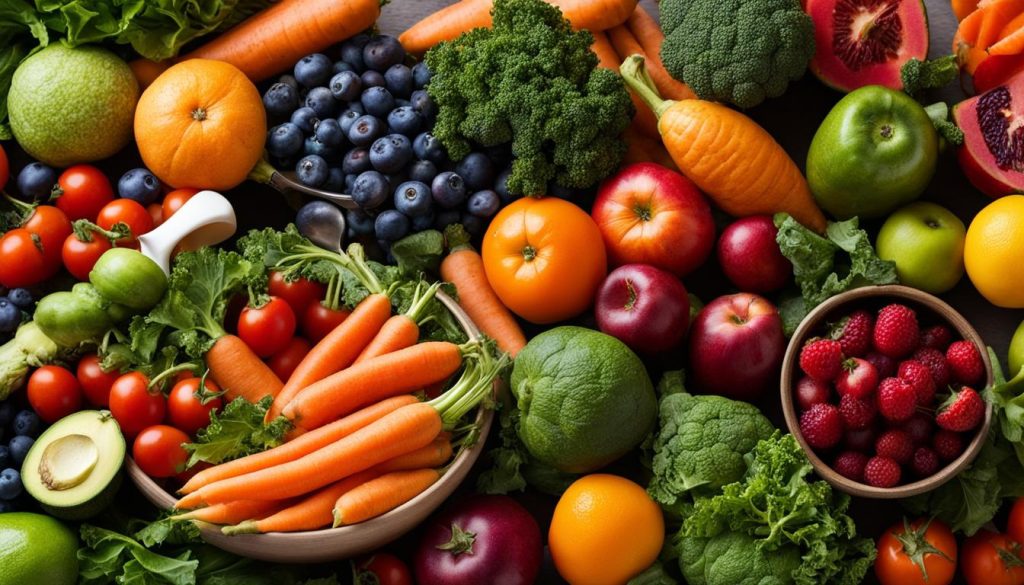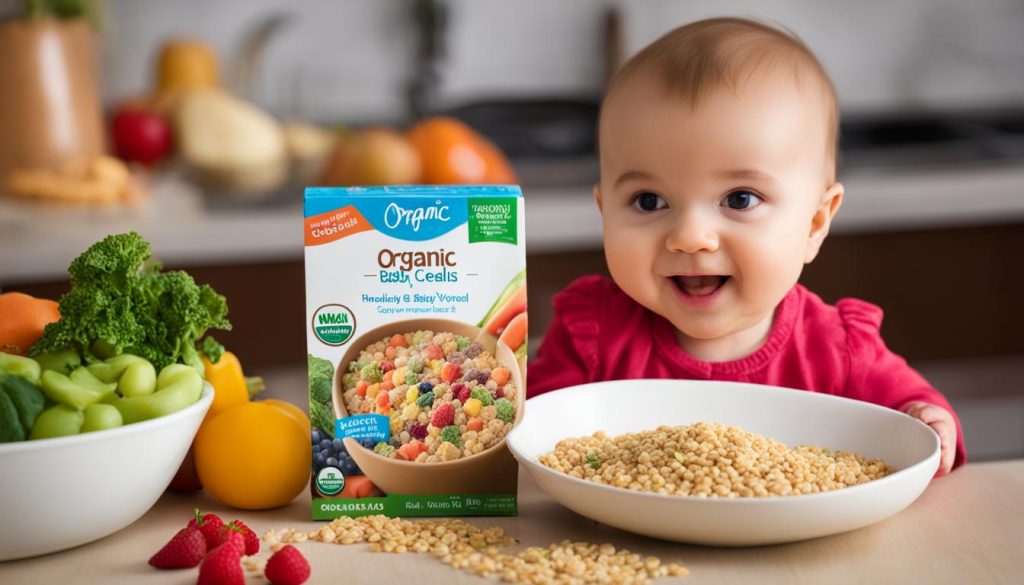Welcome to a tantalizing journey through the delightful realm of baby food flavors! As a parent, you want the best for your little one, and that includes introducing them to a variety of delicious and nutritious tastes. Join me as we embark on this exciting adventure, discovering the best, most popular, and healthiest baby food flavors available.
Benefits of Organic Baby Food
Organic baby food offers numerous benefits for the health and development of infants. Compared to conventional baby food, organic options are made from ingredients that are grown without the use of synthetic pesticides, fertilizers, or genetically modified organisms. This means that organic baby food is free from potentially harmful chemicals that could pose a risk to a baby’s health.
In addition to being pesticide-free, organic baby food is also free from artificial flavors, colors, and preservatives. This ensures that babies are consuming pure and natural ingredients without any unnecessary additives or chemicals. By opting for organic baby food, parents can provide their little ones with a clean and wholesome diet right from the start.
“Organic baby food is made from ingredients that are grown without the use of synthetic pesticides, fertilizers, or genetically modified organisms.”
Studies have shown that organic baby food may have lower levels of pesticide residues compared to conventional baby food. This is important as babies have developing immune systems and are more susceptible to the harmful effects of pesticides. By choosing organic options, parents can minimize their baby’s exposure to these potentially harmful substances.
Another advantage of organic baby food is that it is often produced using sustainable farming practices. Organic farming methods prioritize the health of the soil, minimize pollution, and preserve natural resources. By supporting organic farming, parents can contribute to a more environmentally friendly food system and promote a healthier planet for future generations.
Table: Organic vs. Conventional Baby Food
| Organic Baby Food | Conventional Baby Food | |
|---|---|---|
| Ingredients | Organic ingredients grown without synthetic pesticides, fertilizers, or GMOs | Conventionally grown ingredients potentially treated with pesticides and fertilizers |
| Additives | No artificial flavors, colors, or preservatives | May contain artificial additives |
| Pesticide Residues | Lower levels of pesticide residues | Potentially higher levels of pesticide residues |
| Sustainable Farming | Produced using sustainable farming practices | May not prioritize sustainability |
When it comes to choosing baby food, opting for organic varieties can provide peace of mind for parents who want the best for their little ones. From the absence of harmful chemicals to the support of sustainable farming practices, the benefits of organic baby food extend far beyond the plate.
Nutritional Content of Baby Food
Baby food plays a crucial role in providing infants with the necessary nutrition for their growth and development. It is carefully formulated to ensure a balance of macronutrients, such as carbohydrates, proteins, and fats, as well as essential vitamins and minerals. The nutritional content of baby food is designed to meet the specific needs of young children, supporting their overall health and well-being.
The vitamins and minerals found in baby food are essential for various bodily functions. For example, vitamins like vitamin A, vitamin C, and vitamin E support a healthy immune system and promote proper cell growth. Minerals like iron, calcium, and zinc are vital for bone development, cognitive function, and energy production.
Table: Essential Vitamins and Minerals in Baby Food
| Vitamins | Minerals |
|---|---|
| Vitamin A | Iron |
| Vitamin C | Calcium |
| Vitamin E | Zinc |
Baby food often includes a wide variety of ingredients to provide infants with a range of essential micronutrients. Fruits and vegetables are excellent sources of vitamins and minerals, while grains contribute carbohydrates for energy. Meats and protein-rich foods supply important nutrients like iron and zinc, which are crucial for brain development and overall growth. Some baby food products are also fortified with additional vitamins and minerals to ensure infants receive optimal nutrition.
It is important for parents to carefully select baby food that offers a diverse array of nutrients to support their child’s healthy growth. Reading labels and opting for a variety of flavors and ingredients can help ensure that infants receive a well-rounded diet. Consulting with a healthcare professional can also provide valuable guidance on the nutritional needs of babies and the appropriate choices for baby food.
Tips for Introducing Baby to Flavors
Introducing solids to your baby is an exciting milestone, and it’s important to approach it with care and consideration. Here are some tips to help you navigate the journey of introducing your little one to a world of flavors:
Start Slowly and Gradually
When beginning the introduction of solid foods, it’s best to start with single-ingredient purees. This allows your baby to acclimate to new tastes and textures one at a time. Start with mild flavors, such as mashed bananas or steamed sweet potatoes. Gradually introduce a variety of fruits, vegetables, grains, and meats to expand your baby’s palate.
Consider Age-Appropriate Flavors
As your baby grows, you can introduce more complex flavors and textures. It’s essential to ensure that the foods you offer are age-appropriate and suitable for your baby’s development. For example, soft cooked vegetables and fruits, well-cooked grains, and finely chopped or ground meats can be introduced as your baby’s chewing and swallowing skills progress.
Repeat Exposure for Increased Acceptance
Research suggests that repeated exposure to certain flavors can increase acceptance in babies. Don’t be discouraged if your little one initially rejects a particular food. It may take several attempts before they develop a liking for it. Keep offering a variety of flavors and continue to expose your baby to different tastes to expand their palate.
Remember to consult with your pediatrician for guidance on when and how to introduce solids to your baby, as each child’s needs may vary. By taking a gradual and mindful approach to introducing flavors, you can foster a love for diverse and nutritious foods in your little one.
Homemade Baby Food Flavors
Making homemade baby food allows me to have complete control over the ingredients and flavors I introduce to my baby. With a wide range of recipes available, I can create unique and delicious flavors that will help develop my baby’s palate. From simple fruit and vegetable purees to more complex combinations, the possibilities are endless.
One of my favorite homemade baby food flavors is the avocado and banana mash. Avocado is packed with healthy fats, while bananas add sweetness and a creamy texture. This combination is not only nutritious but also introduces interesting flavors to my baby’s taste buds.
Another delightful option is the sweet potato and lentil puree. This recipe provides a rich blend of complex carbohydrates and protein, perfect for growing little ones. The natural sweetness of sweet potatoes pairs well with the earthy taste of lentils, creating a balanced and satisfying meal for my baby.
For a burst of vitamins and minerals, I enjoy preparing a spinach and apple blend. Spinach is a nutrient powerhouse, and when combined with the sweetness of apples, it becomes a flavorful and nutrient-rich puree. This recipe is an excellent way to introduce leafy greens into my baby’s diet.
FAQ
What is Baby-Led Weaning (BLW)?
Baby-Led Weaning (BLW) is an approach to introducing solid foods to babies, where they are allowed to explore and feed themselves a variety of flavors, textures, and tastes.
What products does Abiie, LLC offer for Baby-Led Weaning?
Abiie, LLC offers products like the Silicone Suction Triangle Plate, the Beyond Junior Y High Chair, and the Octopod Children’s Dinnerware to enhance the Baby-Led Weaning experience.
What are the benefits of organic baby food?
Organic baby food is made from organic ingredients, grown without synthetic pesticides or genetically modified organisms. It is also free from artificial flavors, colors, and preservatives, and may have lower levels of pesticide residues compared to conventional baby food. Organic farming practices used in producing organic baby food are also more sustainable for the environment.
What nutritional content does baby food provide?
Baby food is carefully formulated to provide infants with the necessary macronutrients (carbohydrates, proteins, and fats), as well as essential vitamins and minerals. It often includes ingredients like fruits, vegetables, grains, and meats to provide a variety of micronutrients. Fortified baby food may contain added vitamins and minerals to ensure infants receive adequate nutrition.
How should I introduce flavors to my baby?
It is recommended to start slowly and gradually when introducing flavors to your baby. Begin with single-ingredient purees and gradually introduce a variety of fruits, vegetables, grains, and meats. Wait until around 6 months to start complementary feeding, while continuing breastfeeding. Offer a variety of flavors and textures to expose your baby to different tastes. Repeat exposure to certain foods may increase acceptance. As your baby grows, you can introduce more complex flavors and textures, including spices and herbs.
Can I make homemade baby food?
Yes, making homemade baby food allows parents to have control over the ingredients and flavors they introduce to their baby. There are various recipes available, ranging from simple fruit and vegetable purees to more complex combinations. Some unique baby food flavors to consider include avocado and banana mash, sweet potato and lentil puree, and spinach and apple blend. Homemade baby food can be made in batches and stored in the freezer for convenience.
Source Links
- https://finance.yahoo.com/news/empower-babys-taste-adventure-baby-110000061.html
- https://healthybabyng.com/delving-into-the-world-of-baby-taste-exploration-unveiling-the-truth-behind-flavor-development/
- https://medium.com/@baselinehrs/fostering-food-acceptance-strategies-for-introducing-a-variety-of-flavors-and-textures-to-infants-64e430b3c9fe





